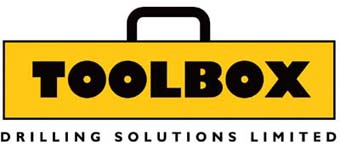Below are commonly asked questions and their
answers:
1) The hydrastab, like the Andergauge and Sperry
tools, uses extending pistons to increase the stabilizer's gauge -
don't the pistons dig into the mud cake?
It is true that
in soft formations the blades may sink into the mud cake and reduce
the effectiveness of inclination control. To counter this potential
problem, the hydrastab has 3" pistons spaced closely together and
offers a larger blade surface than any other tool currently on the
market.
2) Why is a hydraulically actuated tool seen as
more beneficial than a mechanically actuated tool?
The
mechanical tool was designed in the early eighties and before
steerable motors were regularly used in directional wells.
Engineered for simple rotary assemblies, it was not until
directional drillers began placing the mechanical VGS tool above the
motor that the disadvantages became apparent. The hydraulically
actuated tool allows for easy gauge actuation, whether the BHA is on
or off bottom.
3) The mechanical VGS has a high pressure
loss through the tool. How does the hydrastab
compare?
The hydrastab does have a pressure loss but it
is considerably lower than the mechanical tool. If we take
comparable 12¼" tools as an example, the hydrastab has a 200 psi
loss, compared with nearly 600 psi with the mechanical
tool.
4) The hydrastab is shorter than other comparable
VGS tools - why is this an advantage?
With the advances
in motor technology and its increased length, it is important to be
able to place the blade of the VGS as close to the top of the motor
as possible. By doing this, you can ensure inclination control when
changing the stabilizer gauge. The further the blades are from the
top of the motor, the less effect the gauge change makes, and
inclination control is lost.
5) The mechanical tool has a
telescopic mandrel and it has been known for it to come apart in
hole - could this happen to the hydrastab?
The hydrastab
has an internal mandrel that moves across the base of the pistons.
Unlike the mechanical tool, the mandrel is completely enclosed
within the body of the tool and so none of the forces seen on the
mechanically actuated mandrel are present on the hydrastab mandrel.
6) Is the hydrastab oil filled?
Yes, the
internal parts work in oil. Additionally, there is a pressure
compensation system that ensures the tool is fully pressure
equalised at all times.
7) What tool sizes will be
available?
The hydrastab will initially be built for
12¼", 8½" and 6" hole sizes.
8) How will I know when the
tool has changed from one position to the other?
The
hydrastab has a simple and adjustable pulsar system that gives the
driller a positive 200-psi indication on surface. In addition, the
hydrastab will be offered with an optional surface box which will
monitor the pressure differential and tell the driller when the tool
has tripped.
9) Will the hydrastab be more expensive to
run than the mechanical tool?
No, the hydrastab will be
less expensive to maintain and service and, due to the quality of
hardfacing used, will maintain full gauge for the length of the run.
Although rental prices have yet to be finalised, it is expected that
the tool will be comparable in cost to the existing
tools.
10) In the future, will it be possible to build an
even shorter tool for below motor runs?
Yes, we are
currently looking at whether it would be possible to engineer a four
to five foot tool for specific below motor operations.
11)
Why are the melon shaped pistons offered as an option and not used
as standard?
The melon shaped pistons are intended for
use above a motor to improve the slide time and action of the motor
when being used in the orientation mode. When run as a rotary tool,
it is anticipated that standard pistons would be
preferred.
12) What experience does your company have when
compared with the other VGS companies?
The company
manufacturing the hydrastab has over eleven years of VGS engineering
and development experience. In addition, the marketing team have all
worked in the VGS field for a similar amount of time.

|

